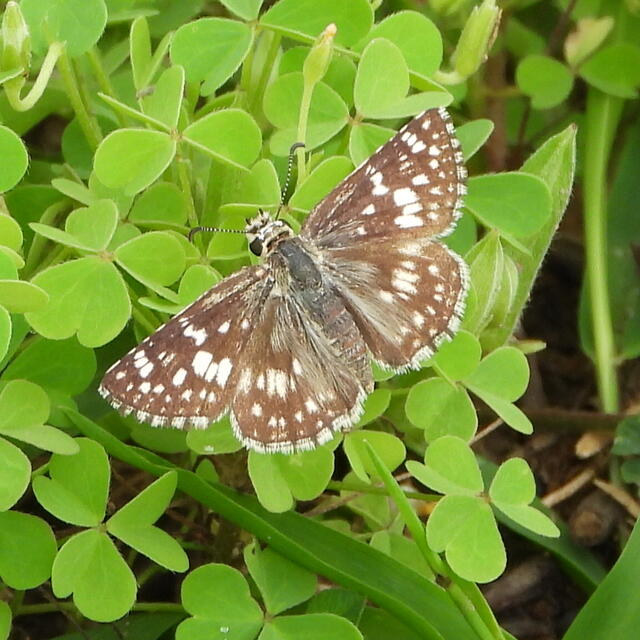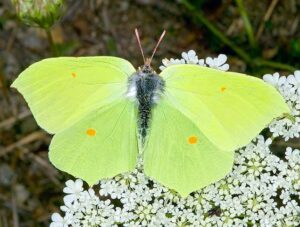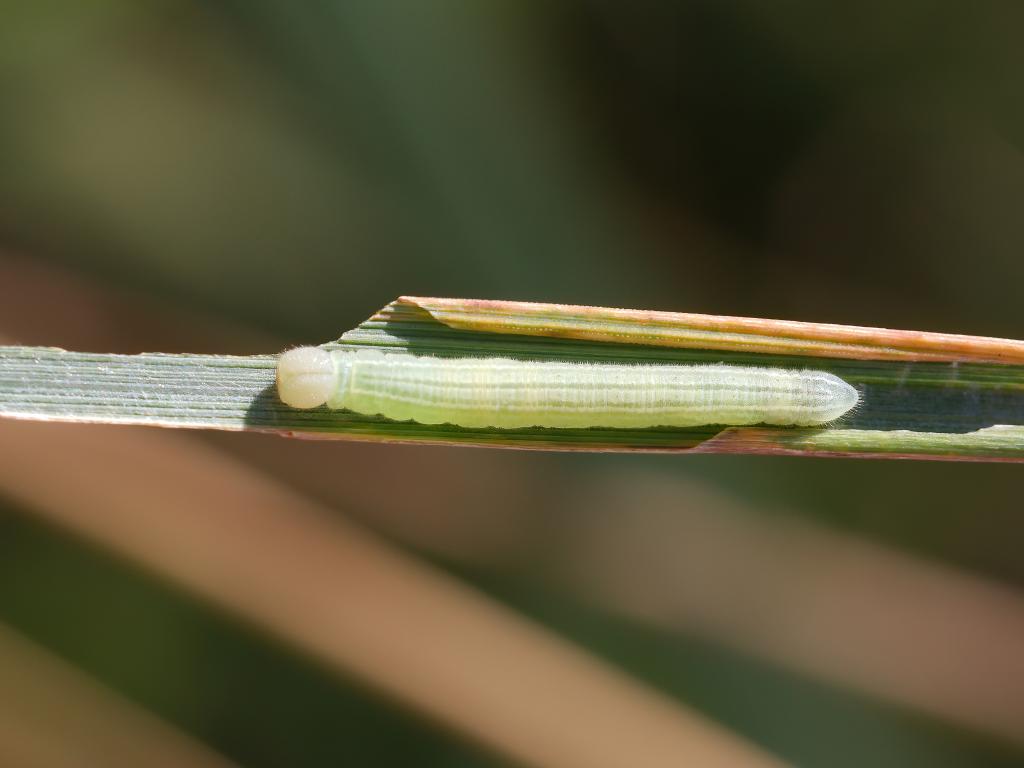
This small, fast-flying butterfly is now restricted to damp grassy habitats in western Scotland and a recently reintroduced population in eastern England. Males are seen more frequently than females, perching in sheltered positions either next to wood edges or amongst light scrub or bracken. They dart out to investigate passing objects, defending their territory against other males and other butterfly species, or in the hope of locating a potential mate. Females are less conspicuous and fly low among grasses when egg-laying.
The Chequered Skipper died out from England in 1976 but it has been reintroduced from continental Europe as part of a long-term conservation plan. In Scotland, there are thought to be about ten core areas and there have been no obvious recent changes in range.
Size and Family
- Family – Skippers
- Small Sized
- Wing Span Range (male to female) – 29-31mm
Conservation status
- Protected under the Nature Conservation Act in Scotland
- UK BAP: Priority Species
- Butterfly Conservation priority: High
- European status: Not threatened
- Protected In Great Britain for sale only
Caterpillar Foodplant Description
The main foodplant in Scotland is Purple Moor-grass (Molinia caerulea). In England, it is mostly associated with Wood Small-reed (Calmagrostis epigejos) and False-brome (Brachypodium sylvaticum), though a range of grasses may be used as they are in continental Europe.
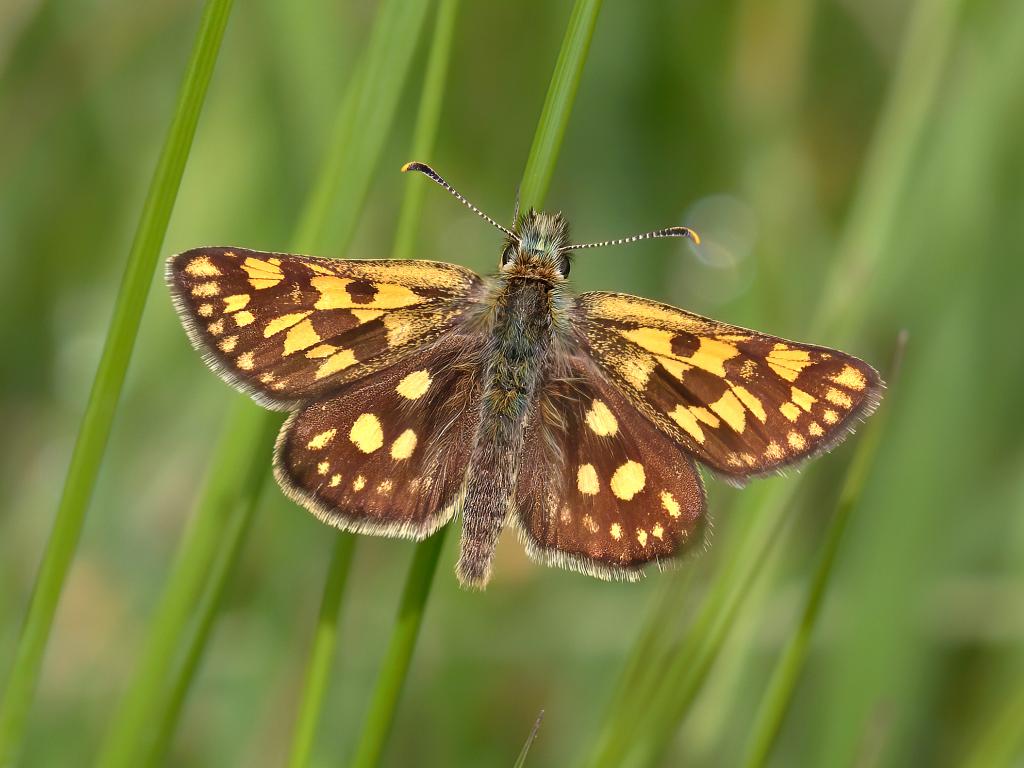
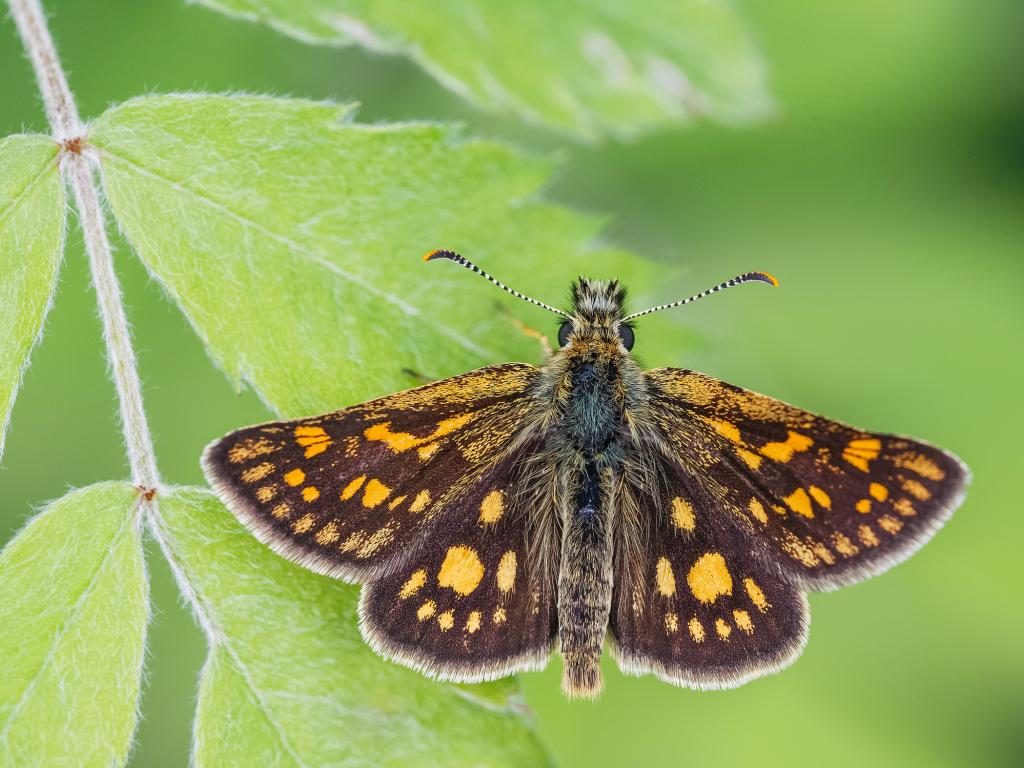
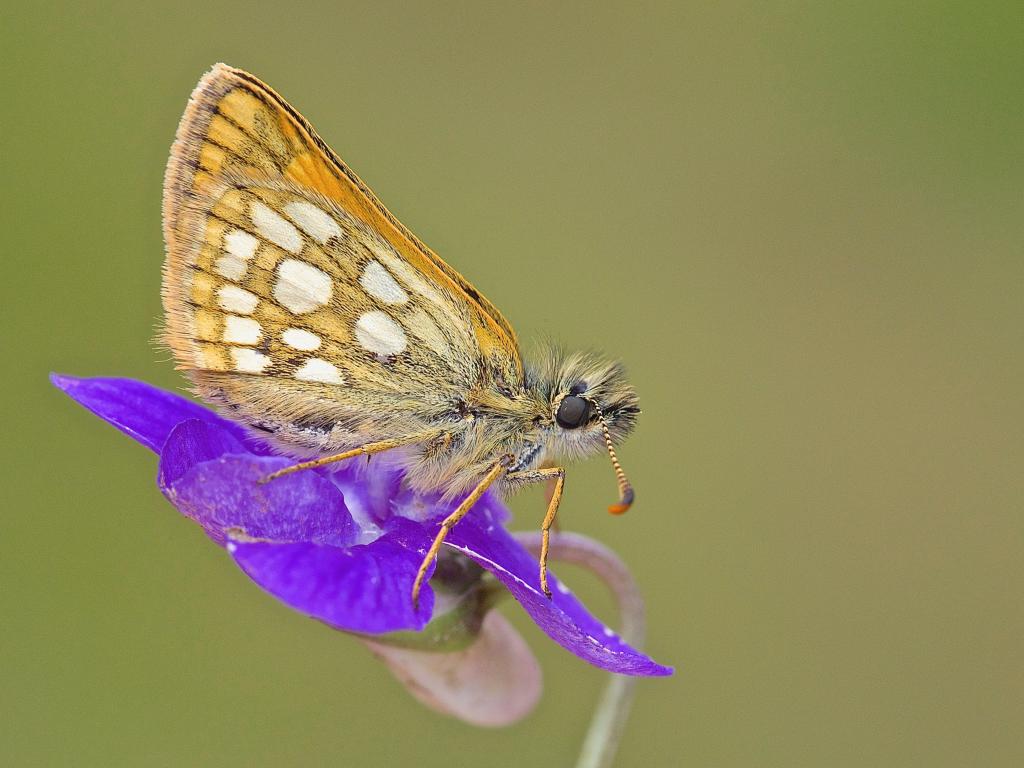
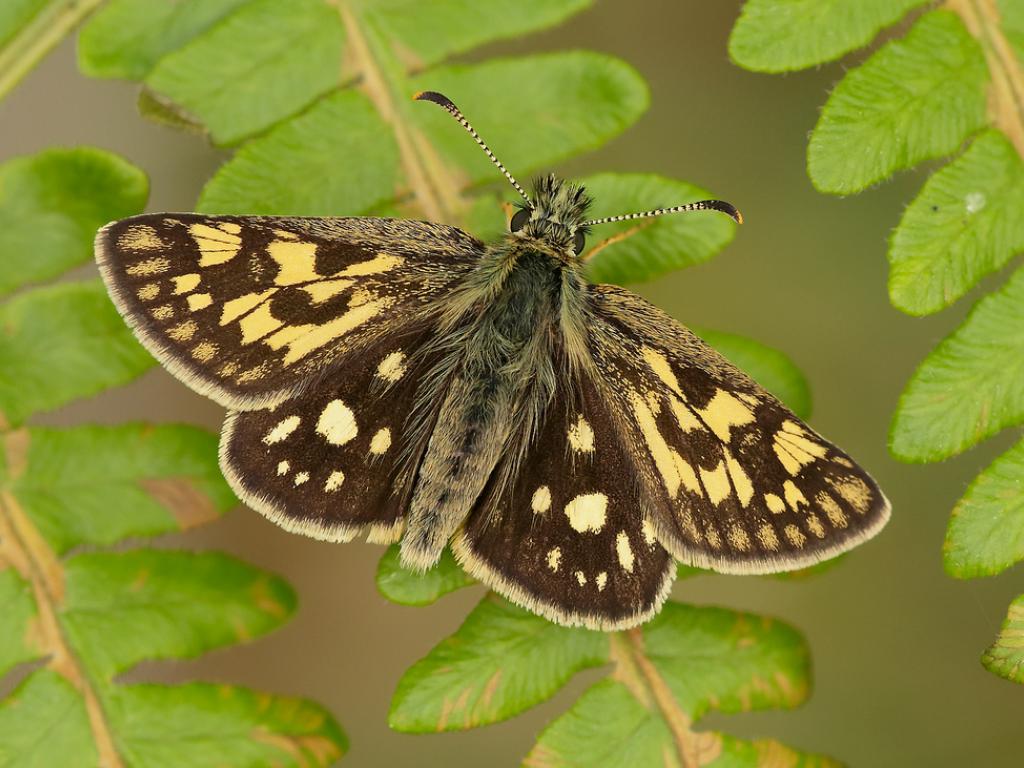
Subfamily: Pyrginae
Identification: Upperside of male is blue-gray; female is black. Both sexes have large white spots which form median bands across both wings. Fringes of male checkered but black checks often reach only halfway to edge of fringe. Male has a costal fold enclosing scent scales on the upperside of the forewing. Underside is dull white with dark gray or olive bands. Spots of the hindwing marginal row are very small; spots of the submarginal row are larger. This species is separated from the white checkered skipper with confidence only by dissection and examination of the male genitalia.
Wing Span: 1 – 1 1/2 inches (2.5 – 3.8 cm).
Life History: Males patrol in swales most actively in the afternoon, and mating takes place then. Females lay eggs singly on leaf buds and tops of leaves. Adults roost exposed on a tall plant beginning in late afternoon. Caterpillars make folded-leaf nests in which they live and feed, and fully-grown caterpillars hibernate.
Flight: February-October in the Deep South, March-September in the north.
Caterpillar Hosts: Several plants in the mallow family (Malvaceae) including globemallows (Sphaeralcea), mallow (Malva), hollyhock (Althaea), alkali mallows (Sida), velvet-leaf (Abutilon), and poppy mallow (Callirhoe).
Adult Food: Nectar from white-flowered composites including shepherd\’s needles, fleabane, and asters; also red clover, knapweed, beggar\’s ticks, and many others.
Habitat: Open, sunny places with low vegetation and some bare soil including prairies, meadows, fields, roadsides, landfills, yards, gardens, pastures, openings and trails in woods.
Range: Most of the temperate United States south to Gulf coast, w. Texas, se. Arizona, southern California, and mountains of northern Mexico. Colonizes as far north as central Alberta, southern Ontario, and southern New England. It cannot survive very cold winters and may not be a permanent resident north of the 40th parallel.
Conservation: Not usually required.
NCGR: G5 – Demonstrably secure globally, though it may be quite rare in parts of its range, especially at the periphery.
Management Needs: None reported.
Taxonomy Notes: Formerly in the genus Pyrgus
Alternate Scientific Names:Pyrgus communis
This colourful skipper is distinguished from all other skippers by the numerous yellowish spots found on its upperside – resulting in a chequered appearance that gives this butterfly its name. Like most skippers, this is a fast-flying butterfly, and its chequered markings make it very difficult to track when in flight. This butterfly does not exist in discrete colonies; populations are generally spread over wide areas of habitat. The Chequered Skipper is confined to north-west Scotland where it was first discovered in 1939 at Loch Lochy in West Inverness-shire, where its distribution is centred on Fort William and where the larval foodplant is Purple Moor-grass.
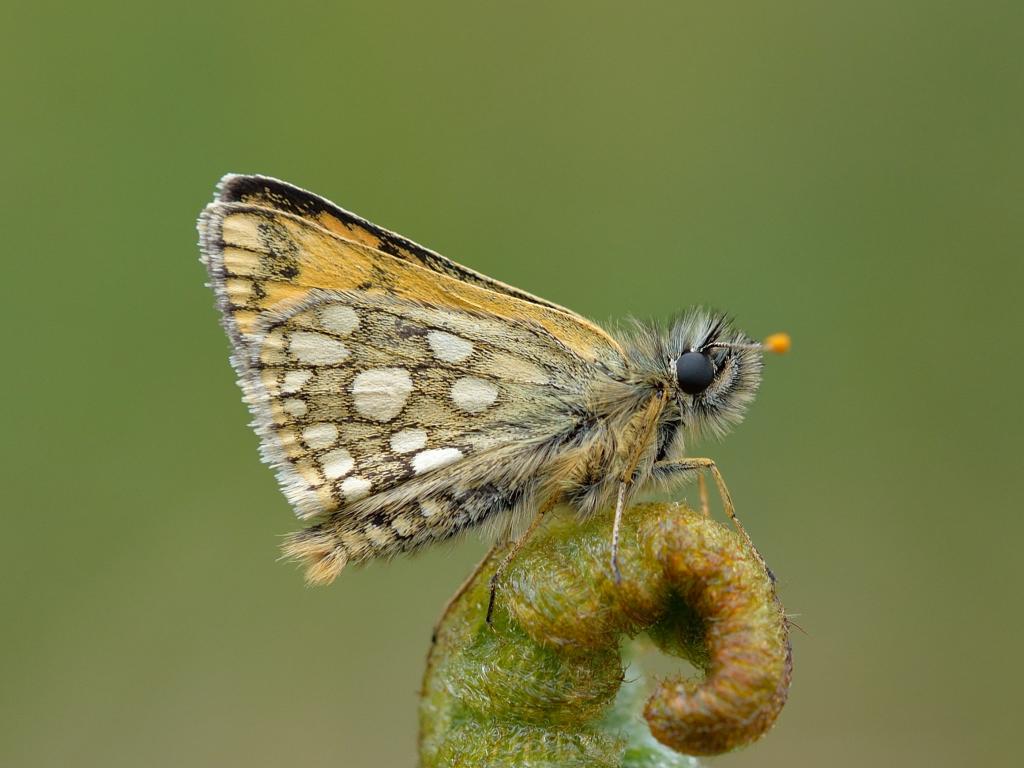
This species formerly occurred in England, inhabiting larger oak woods of central and east England, where False Brome (Brachypodium sylvaticum) was used as the larval foodplant. The butterfly was sadly declared extinct in England in 1976, with its last sites in north-east Northamptonshire. Mackworth-Praed (1945) considers the Scottish specimens to be visibly distinct from the extinct English specimens: “It [the Scottish race] is, at least biologically, a distinct race from that of the eastern counties of England, and appears to be distinct in coloration. Its appearance on May 10th in 1942, and on May 28th in the cold, wet season of 1943, is a month earlier than is normal with the English race. Its coloration is cleaner and harder, with no yellow wash on the underside”.

